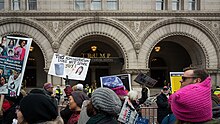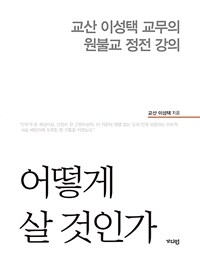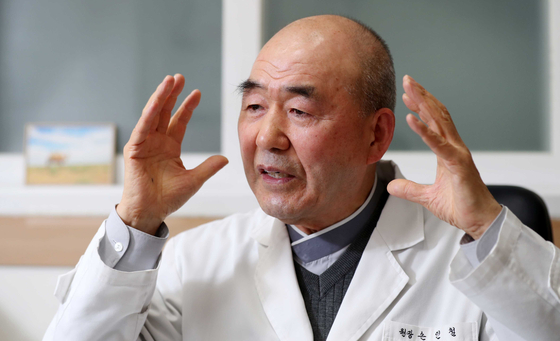Tidying Up with Marie Kondo - Wikipedia
Tidying Up with Marie Kondo
From Wikipedia, the free encyclopedia
Jump to navigationJump to search
Tidying Up with Marie Kondo

Created by Marie Kondo
Written by Marie Kondo
Directed by Jade Sandberg Wallis
Country of origin United States
Original language(s) English, Japanese
No. of seasons 1
No. of episodes 8 (list of episodes)
Production
Executive producer(s)
Gail Berman
Marie Kondo
Running time 35–47 minutes
Production company(s) The Jackal Group
Distributor Netflix
Release
Original network Netflix
Original release 1 January 2019
External links
Official website
Tidying Up with Marie Kondo is a reality television series developed for Netflix and released on January 1, 2019.[1] The show follows Marie Kondo, a Japanese organizing consultant and creator of the KonMari method, as she visits families to help them organize and tidy their homes.[2][3] Marie lida acts as Marie Kondo's interpreter.[4][5]
Contents
1Synopsis of season one
2Episodes
3Methodology of the show
4Reception
5Effect on donations to charity shops
6References
7External links
Synopsis of season one[edit]
The premise of "Tidying Up with Marie Kondo" is that each episode, Kondo visits a new American family household in need of organizing and decluttering.[6] Each family has individual backgrounds and needs, which the show addresses with both hands-on guidance from Kondo and cutaways of Kondo giving additional KonMari explanations.[7]
Episodes[edit]
No.TitleOriginal air date
1 "Tidying With Toddlers" January 1, 2019
2 "Empty Nesters" January 1, 2019
3 "The Downsizers" January 1, 2019
4 "Sparking Joy After a Loss" January 1, 2019
5 "From Students to Improvements" January 1, 2019
6 "Breaking Free from a Mountain of Stuff" January 1, 2019
7 "Making Room for a Baby" January 1, 2019
8 "When Two (Messes) Become One" January 1, 2019
Methodology of the show[edit]
Marie Kondo's ideology towards decluttering is called the KonMari method. Her process, which she expands upon personally in the Netflix series, includes having participants go through their homes section by section--"1) Clothing, 2) Books, 3) Paper, 4) Komono (kitchen, bathroom, garage and miscellaneous) 5) Sentimental items".[8] Then, when the items are gathered together, Kondo asks the participants to go through the individual items one by one and only keep what "sparks joy."
While her method to cleaning is effective in organizing people's homes and environments, Kondo came to understand that her method was "far more psychological than it was practical."[9] This perspective is supported well by studies done on how people perform and feel in tidy versus messy environments.[10] Research suggests that "clean organized environments" have a variety of psychologically beneficial effects--such as clearer thought processes, increased confidence, and abilities.[11]
Further research shows that an untidy environment can negatively impact many aspects of human health--such as mood and stress levels, memory capabilities, and even the ability to process other people's facial expressions.[12] When people's personal space is "decluttered," they are better able to sleep, focus, and hold feelings of satisfaction with their lives.[12]
The evidence that Kondo's show positively affects the mental health of the people featured in it isn't just seen on the show itself, but in interviews given by participants later on.[13] One couple, seen in Episode 1, "Tidying with Toddlers," Kevin and Rachel Friend, said after Kondo's help that, "Chaos for us doesn’t happen anymore. We’re able to take on things. Nothing overwhelms us anymore. Now, it's just our lifestyle."
Reception[edit]

A protester at 2019 Women's Marchin Washington D.C. holding a sign that reads "This administration does not spark joy!", derived from Kondo's idea of only keeping things that "spark joy"
Reviews of the show have been generally positive. On the review aggregator site Rotten Tomatoes, the show holds a score of 78%, noting that Marie Kondo "makes for a delightful instructor".[14] On Metacritic, the show has a score of 69 based on eight critics, indicating "generally favorable reviews".[15]
In The Atlantic, Sarah Archer says that the show is about "cultivating empathy for the things that surround us", noting that Kondo's empathy is the key to her success in helping people.[16] In Vice, Nicole Clark writes that by showcasing the inner workings of family homes, the show has unintentionally highlighted differing gender expectations towards tidying and organizing households.[17]
Jack Seale in The Guardian is less positive, noting that the show is simply "a show where a woman just tells people to tidy up." He adds that the before and after reveals lack excitement, revealing the same house except tidier.[18]
Others have been on the fence, like Kristin van Ogtroi from Time, who wrote about the "completely bananas" method Kondo employs, suggesting that while necessary items should still be kept around, it is still a worthwhile endeavor to mentally refocus on what brings one joy.[19]
Effect on donations to charity shops[edit]
In the immediate wake of the show's release, some charity shops saw an increase in the number of donations received. Donations to Goodwill stores in the Washington D.C.area were up by 66% for the first week of January, an effect attributed to the show encouraging people to tidy their houses.[20] Beacon's Closet in New York also saw similar increases in donations.[21] In western Sydney, charity St Vincent de Paul saw a 38% rise in donations in the first three weeks since the show's premiere.[22]
----------
References[edit]
Tidying Up with Marie Kondo on Netflix
Tidying Up with Marie Kondo on IMDb
References[edit]
- ^ Annear, Steve (January 8, 2019). "What is KonMari and why are people folding their shirts weird?". Boston Globe.
- ^ Nguyen, Hanh (January 18, 2019). "The World Loves Marie Kondo, But It Was America That Needed Her". IndieWire. Retrieved January 20, 2019.
- ^ McLeman, Alex (December 17, 2018). "Marie Kondo is Coming to Your Home to Help You Declutter". Inspiralist. Retrieved January 28, 2019.
- ^ Marie Kondo Returns, Just in Time for Your New Year’s Resolutions On the set of her new Netflix series, Tidying Up., vulture.com, December 31, 2018
- ^ Marie Kondo's brilliant interpreter is the unsung hero of the Konmari phenomenon, qz.com, 19 Januar 2019
- ^ Archer, Sarah (January 4, 2019). "'Tidying Up With Marie Kondo' Isn't Really a Makeover Show". The Atlantic. Retrieved February 12, 2019.
- ^ D'Addario, Daniel; D'Addario, Daniel (December 27, 2018). "TV Review: 'Tidying Up With Marie Kondo'". Variety. Retrieved February 12, 2019.
- ^ Pringle, Gill (December 31, 2018). "As Marie Kondo gets her own Netflix show, can she help me tidy up?". inews.co.uk. Retrieved February 12, 2019.
- ^ Brodesser-Akner, Taffy (July 6, 2016). "Marie Kondo, Tidying Up and the Ruthless War on Stuff". The New York Times. ISSN 0362-4331. Retrieved January 23, 2019.
- ^ Stiff, Chris. "Marie Kondo: a psychologist assesses the KonMari method of tidying". The Conversation. Retrieved January 23, 2019.
- ^ Stiff, Chris. "Marie Kondo: a psychologist assesses the KonMari method of tidying". The Conversation. Retrieved January 22, 2019.
- ^ Jump up to:a b S, Libby; er (January 21, 2019). "Planning a Marie Kondo clean-up? Here's what clutter does to your body and brain". ABC News. Retrieved January 22, 2019.
- ^ "How This Marie Kondo Couple Dealt With the Backlash". www.yahoo.com. Retrieved January 23, 2019.
- ^ Tidying Up with Marie Kondo: Season 1 – Rotten Tomatoes, retrieved January 20,2019
- ^ Tidying Up with Marie Kondo, retrieved January 20, 2019
- ^ Archer, Sarah (January 4, 2019). "'Tidying Up With Marie Kondo' Isn't Really a Makeover Show". The Atlantic. Retrieved January 11, 2019.
- ^ Clark, Nicole; Zaragoza, Alex (January 10, 2019). "'Tidying Up with Marie Kondo' Is Inadvertently About Women's Invisible Labor". Vice. Retrieved January 11, 2019.
- ^ Seale, Jack (January 4, 2019). "Tidying Up With Marie Kondo review – TV destined for the bin bag of shame". The Guardian. ISSN 0261-3077. Retrieved January 11, 2019.
- ^ "In Which We Explore the Utterly Perplexing Art of Decluttering With Joy". Real Simple. Retrieved February 12, 2019.
- ^ Koncius, Jura. "The tidying tide: Marie Kondo effect hits sock drawers and consignment stores". Washington Post. Retrieved January 11, 2019.
- ^ Syme, Rachel (January 9, 2019). "The Marie Kondo Effect Reaches Beacon's Closet". The New Yorker. Retrieved January 11, 2019.
- ^ Pitt, Helen (January 19, 2019). "Marie Kondo creates boom for op shoppers but bad news for oceans". The Sydney Morning Herald. Retrieved February 12, 2019.
Tidying Up with Marie Kondo on Netflix
Tidying Up with Marie Kondo on IMDb






 최근작 :
최근작 : 


